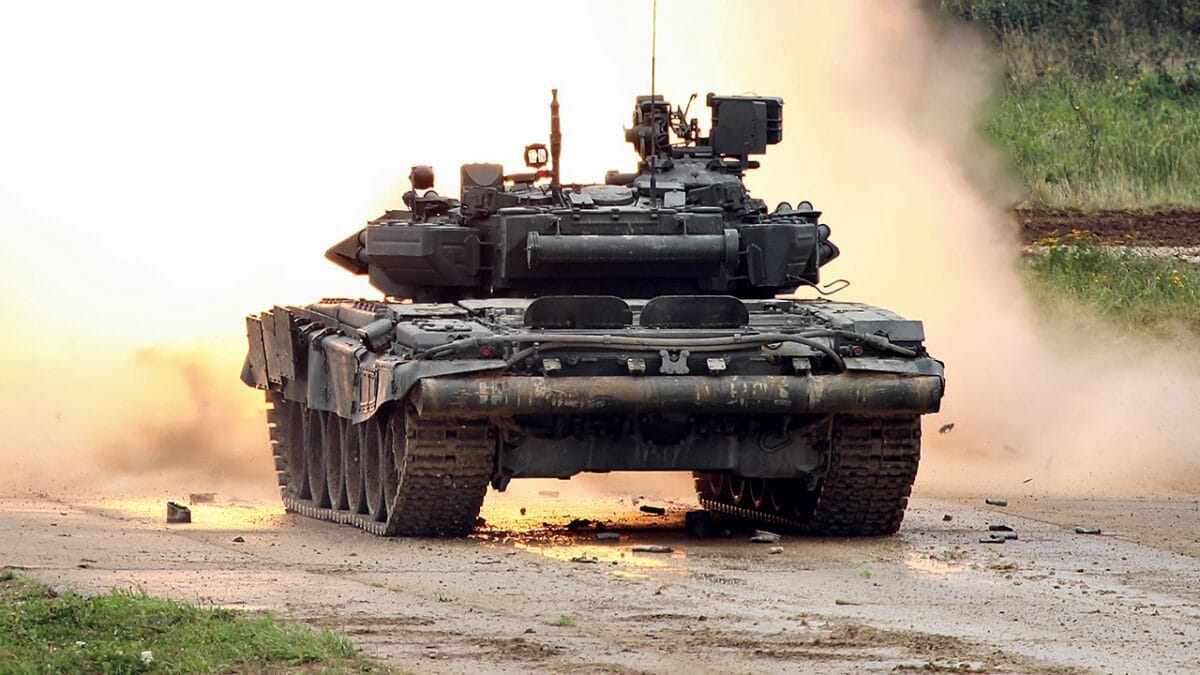Ukraine has slowly become a graveyard of Russian tanks and other armored vehicles. Hundreds of tanks have reportedly been destroyed since Moscow launched its unprovoked invasion in late February, and while Ukrainian fighters have successfully used Javelin and NLAW anti-tank missiles to take out the Russian vehicles, there is now evidence circulating online that some of the invaders are breaking their own equipment in order not to have to fight.
According to the newly released audio of a conversation between a Russian soldier and his parents that the Security Service of Ukraine intercepted, the invading forces had suffered so many losses that the soldiers opted to break the only tank that remained intact to avoid going to the front. In a phone call, a seemingly young Russian told his father that his unit had ten tanks at the beginning of the war. After nine were destroyed, the tanker decided to break it on purpose after fearing that they’d be killed if they continued to fight on.
“Well, thank God for that! Take it apart, hand it over for scrap metal, and stay safe,” the soldier’s father responded.
The audio of the conversation has been shared on Facebook and other social media platforms, yet have not been independently confirmed.
Ukraine has been using the intercepted conversations between the Russian troops and their relatives as a propaganda tool, and with good reason. Instead of brave Russian soldiers telling of victories on the battlefield, the conversations reveal conscripts led by “stupid commanders” and that many were scared while others resorted to looting.
Jack-in-the-Box Tanks
It is easy to see why some Russian tankers have become wary of the capabilities of their equipment. Military analysts have suggested that battlefield images show Russian tanks are suffering from a defect that Western militaries have reportedly known about for decades and which is referred to as the “jack-in-the-box” effect.
The problem relates to how the tanks’ ammunition is stored, CNN reported. It is something Moscow should have seen coming, as unlike Western tanks, Russian ones carry multiple shells within the turrets and rely on an autoloader. While that reduces the number of crew members within the vehicle, it makes the turrets highly vulnerable as even an indirect hit can start a chain reaction that causes an entire ammunition store of up to 40 shells to explode.
The resulting shockwave is so great that the turret is literally blown off the tank and can be launched into the air as high as a two-story building. Images of such explosions have also been shared on social media.
“What we are witnessing with Russian tanks is a design flaw,” Sam Bendett, an adviser with the Russia Studies Program at CNA and an adjunct senior fellow with the Center for a New American Security, explained to CNN. “Any successful hit … quickly ignites the ammo causing a massive explosion, and the turret is literally blown off.”

Russian T-90 Tank. Image Credit: Creative Commons.
While newer Russian tank designs, notably the T-14 Armata, have the crew in a compartment in the main hull of the tank – in most of the tanks deployed to Ukraine, the commander and gunner are in the turret and would be unlikely to survive should their tank take a hit to the turret.
With that in mind, it is easy to see why some Russians are taking a chance and are immobilizing their own tanks.
Now a Senior Editor for 1945, Peter Suciu is a Michigan-based writer who has contributed to more than four dozen magazines, newspapers and websites. He regularly writes about military hardware, and is the author of several books on military headgear including A Gallery of Military Headdress, which is available on Amazon.com. Peter is also a Contributing Writer for Forbes.

